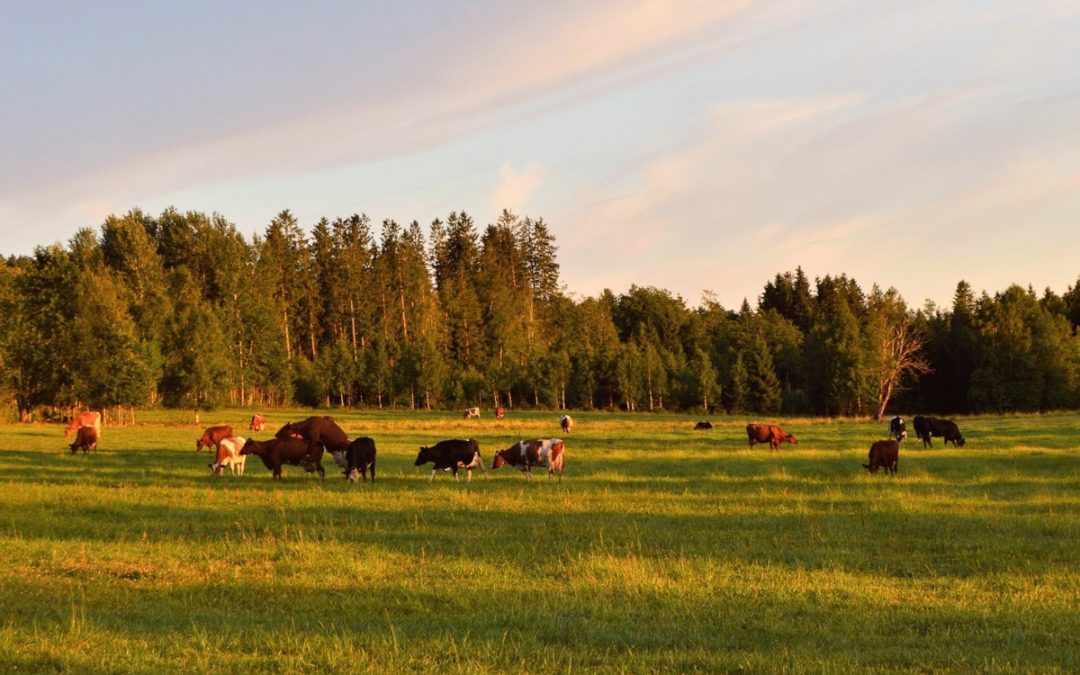Local Raw Dairy – How to find safe, healthy dairy foods for your family
The inclusion of several servings of dairy products per day in the government “food guide” intimates that dairy products are necessary for health. I don’t believe that they are. Today’s overly processed, pasteurized, homogenized, separated, augmented, dairy products certainly don’t offer the benefits of whole, organic, unprocessed dairy from healthy cows. Regardless of the quality of the product, some people thrive on dairy products while others become sick. We all have to get to know our bodies well enough to determine what works for us. That said, if you and your family choose to consume dairy, this article will help you to understand how to source the healthiest dairy possible.
Raw Dairy
In a number of U.S. states, raw dairy is legal and in Europe it is a normal phenomenon. We live in south-western Ontario where, much to our bafflement and frustration, selling unpasteurized dairy products, other than aged cheeses, is currently illegal. We exercise our right to this product through a legal loophole called a “cow share”. I am a firm believer that raw dairy foods from healthy cows offer a far superior food choice to processed pasteurized dairy from the grocery store. For us, its raw dairy or no dairy. (More on the health benefits of raw dairy in another post.) But, if you want to try raw dairy, what do you look for when you source it?
How I found Raw Dairy
In the second trimester of pregnancy with my first child, I felt run-down and downright exhausted. A trusted friend suggested I start drinking raw milk and he helped me to source some. Needless to say, I was hesitant—drinking raw dairy seemed risky, especially pregnant! But, I knew my friend and trusted his knowledge and sources so I took the chance. I had not drunk a glass of milk since I was a kid so it seemed rather indulgent to drink an entire glass as an adult. But, I acquired a half-gallon of milk from him in a glass jar, gave it a good shake to distribute the cream, poured a glass, and drank. It was absolutely delicious—rich, creamy and sweet. I loved it. And, so did my body. I started to acquire milk from him weekly and my energy returned.
Since then, we purchased a cow share with a local farmer and started to acquire our own dairy products weekly: milk, yogurt, cream, cheese and butter. How could we trust that this farmer’s methods and his products were safe and healthy? Here are some details about how he farms and what we looked for….
A Cow-Share
A cow-share is a legally binding, private, contractual agreement between you and your farmer. The farmer sells you a “share” in a cow. Since you own that share in the cow, you are entitled to a share of the milk it produces.
Finding a farmer who sells cowshares is not easy since they prefer to fly under the radar for obviously reasons. A farmer who is willing to risk his family’s farm and livelihood to provide customers with a product he believes in deserves our sincere respect and gratitude.
Exclusively Grass-Fed Cattle
Cattle are ruminants, meaning their digestive system is highly specialized to digest the cellulose in plants like grasses, which our digestive tracts are not designed to handle. Cows have a stomach with 4 compartments. A cow’s stomach is alkaline (whereas your stomach is acidic). The alkaline environment accommodates the habitation of millions of good bacteria—these bacteria, including forms of eColi, digest the cellulose in the grass for the cow and release nutrients for the cow in the process.
When you feed a cow grains, legumes, by-products or pretty much anything but grass, the cow’s stomach becomes more acidic. The bacteria in the stomach mutate to withstand the high level of acidity. Natural, benign forms of eColi mutate into dangerous, virulent forms. These virulent forms of bacteria are then pooped out and contaminate the area in which the cows reside. When the cows are milked, the bacteria can contaminate the milk, making it unsafe to drink and necessitating pasteurization.
A farmer friend of mine who used to factory-farm but has moved to a sustainable system told me that the first of a cow’s four stomachs will actually shrivel up when they are fed high protein rations that do not contain enough cellulose.
Feed a cow its natural diet of grass and its stomachs remain appropriately healthy and alkaline.
Conclusion: Only choose raw dairy from exclusively grass-fed cows. If they are fed rations of corn, soy, or anything other than grass, move on.
Pastured Cows
When cows are confined to a barn, like most factory-farmed dairy cows are for most of their lives, the manure—rather than fertilizing a pasture—accumulates in large quantities, becoming a toxic “waste product” and intensifying bacterial contamination. Living in these bacterial ridden, confined conditions, the cows become sickly and often require antibiotics. Regulations dictate that the milk from a cow on antibiotics must be discarded. However, the antibiotics kill more of the healthy bacteria in the cow’s stomach, further encouraging the bacteria that survives to mutate into more virulent strains, causing more dangerous bacterial contamination…. It’s a vicious cycle.
Put a cow out on pasture, in its natural habitat, grazing on its natural food, and it does not require antibiotics to stay healthy.
Conclusion: Only choose dairy from cows that are out on pasture everyday. Even in winter, they should not be confined to a dark barn.
Long story short, cows are meant to eat grass. Period. Not grains, not legumes, not by-products—grass and only grass—which they are meant to graze on out in open pastures—not confined in close quarters, in dark barns, on concrete floors. So, if you want to drink raw milk, first find healthy, pastured, exclusively grass-fed cows.
Heritage Breeds
Today’s most common dairy cows have been bred to maximize milk production. How does a one encourage a cow to produce more milk? Well, you milk them more often. And, you breed them to have higher levels of oestrogen. That oestrogen transfers into their milk. We know what high levels of oestrogen cause us all kinds of health issues, including early puberty and breast cancer. So, excessive amounts of oestrogen should be avoided. Heritage breed cows, which have not been selectively bred to maximize milk production, naturally how lower oestrogen levels.
Conclusion: If you want to drink any kind of milk, choose milk from heritage breed cows.
Once-a-Day Milking Routine
Most dairy cows are milked twice daily. Milking twice daily keeps their milk production high. Higher milk production equals higher levels of oestrogen in the cow and in the cow’s milk. It also causes the cows additional stress and physical strain.
Our dairy farmer only milks their cows once per day. As a result, the farm gets significantly less milk and the whole operation is far more costly for them. But, they do it to keep oestrogen levels lower, in order to protect our health.
Cows that are only milked once per day also experience less stress, are healthier, and have lower levels of mastitis, etc., that would normally require antibiotics.
Conclusion: Find a farmer willing to milk only once per day and be willing to pay more money for their milk to compensate for it.
Drug-Free Animals
As noted above, confined cows that are fed unnatural foods like grains, legumes and by-products, tend to be sickly and require drugs to keep them alive. Factory farmed cows are milked excessively, which stresses their bodies, often results in mastitis, which, again, results in the need for drugs like antibiotics. Choose healthy, grass-fed, pastured animals that are not over-milked and drugs simply are not necessary.
When their cows do get sick and require assistance, our farmer uses homeopathic remedies, which are inherently safe for the cows and for us.
Conclusion: Antibiotics cause long-term health issues in cows. Healthy cows do not require antibiotics. Ask the farmer about their policy on antibiotics to ensure they have other options at their disposal for keeping their cows healthy.
Mothers and Babies Together
In order for a cow to produce milk, they must first give birth to a calf. In order to maximize milk production on the farm, factory farms typically separate the calf from its mother at birth and put the mother back into the milking rotation. On our farm, calves stay with their mothers until the mother weans them. Again, this practice is significantly more expensive for the farmer but they do it because it is better for the cows.
Conclusion: Ask the farmer if calves stay with their mothers until weaned.
Modern Milking Equipment
In bygone days, milking was done by hand into pails. The chance of contamination was much higher. Today, milking is typically done using modern, sterile equipment. That said, if you find a farm that milks by hand, don’t discount them as long as they are using modern methods to clean the pails, wash the cows’ teats, etc.
Our farmer uses modern equipment to transfer the milk directly from the cow into a refrigerated tank. The chances of contamination are greatly reduced and the milk’s temperature is quickly dropped to keep it fresh until it is transferred into jars.
Conclusion: Modern milking equipment and refrigeration has greatly reduced contamination issues and bacterial counts in milk, negating the need to pasteurize milk from healthy cows.
Testing the Milk for Bacterial Levels and Strains
Our farmer tests their milk for bacteria count and uses the same measures that have been legislated for raw milk in California. The bacteria count in raw milk must be significantly lower than the bacteria count allowed for pasteurized milk. And the milk must be devoid of dangerous strains of bacteria, including listeria.
Conclusion: Ask your raw-milk farmer if he tests his milk or has it tested regularly and what guidelines he follows.
Whole Fat Milk
We believe that the fat in milk is very healthy and should not be removed in processing. Our farmer sells milk, cream and butter. The cream and butter are very expensive. Why? Because they do not “skim” the cream from the top of the milk. Our milk is whole milk, with all the cream. When they produce cream and butter for our use, the by-product is skim milk, which they will feed to the pigs and chickens or simply have to discard.
The milk industry has benefited from the “low-fat craze”, which has enabled them to separate the cream from the milk and sell each part separately. “Skim” milk, traditionally considered a waste product, is now marketed as a health product—it’s not.
Conclusion: Choose a farmer who provides whole dairy products without skimming off the top. Expect to pay a premium for them.
Educate Yourself
The topic of raw dairy is vast and deep. If you choose to source raw dairy for your family, I suggest doing some reading. You may well have to justify your choice to family and friends so educating yourself well on the topic is important. You also need to feel completely comfortable and confident with the choice yourself. There are many books and articles available on the subject. The book “The Untold Story of Milk” is excellent but there are many others available. In the meantime, to get you started, a post on the difference between raw and processed milk will follow soon!

